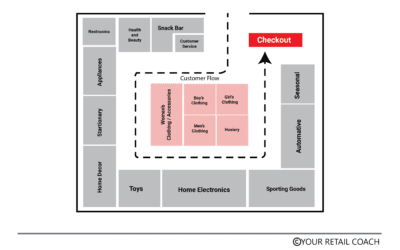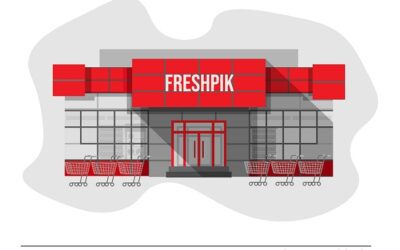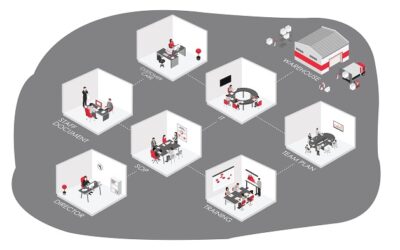Travel Retail
What is Travel Retail?
The concept of travel retail is more prevalent and known to everyone than our imaginations permit. And so is the scope of travel retailing. The business model of travel retail is in existence even before someone coined that term. Airports, train stations and bus stands are prime examples where travel retailing takes place in its simplest forms. Now who has not seen bookstores, restaurants, beverage kiosks, authorised foreign exchange counters, and other such stores and services in these places? Travel retailing is a form of retail business model targeted at travellers and thus, the selling points are located in places like airports, train stations, bus depots, taxi stands, ports, or any place used by travellers in their journey.
About the Travel Retail Industry
The travel retail industry is anticipated to assume a high growth trajectory in the coming decade and is forecasted by some experts to be growing at a CAGR of over 8%. According to Statista, the international travel retail market is estimated to reach USD 60 billion in 2023. By 2030, the industry is anticipated to touch USD 175 billion. If these projections come true, this is going to be a massive growth from a meagre USD 20 billion in 2020. This growth is expected to be driven by many factors including an increasing number of travellers especially from the growing economies in Asia, Africa, Africa, and the Middle East and particularly the Asia Pacific market.
The airport retail sector accounts for more than 70% of the travel retail market. Leading international travel retailing brands are concentrating on delivering an elevated customer experience through various retail automation and digitisation solutions.
Travel Retail as a Business Opportunity
The travel retail industry is a market with high growth potential. It caters to the shopping/emergency needs of travellers. Here are some of the factors that make travel retail an exciting business opportunity.
More Travellers, More Travelling
Statistics may not be required to gauge that the number of travellers by any mode of commuting is only increasing over time. Be it air, rail, road, bus, or taxis, more and more people are joining the economy. Some travel for studies, some for work, some for business and profession, and some for tourism and so on. These numbers are only increasing. There is an increase in traffic in all modes of travelling. This offers a tremendous business opportunity for retailers if they can connect with their customers over physical touchpoints in their travel journeys. These touchpoints are designated areas in airports, train stations, bus stands, and other logistical places.
Promotion of Tourism
Tourism is a significant source of revenue for governments. International travellers bring in foreign currencies that contribute to forex reserves. Governments get tax revenue in various forms from travel and tourism. Tourism also provides a source of employment preceded by the establishment of businesses. So, governments have many solid grounds to promote tourism. This necessitates them to build a business-friendly environment that attracts commercial interest. This has made travel retailing an enticing business opportunity for retail startups, existing retailers, and even foreign retail brands. Dubai is a prime example of this phenomenon where one can attend global shopping festivals tuned to attract customers from all over the world.
Rise in Travel Shopping
Some experts evaluate that more than 50% of travellers indulge in shopping while travelling. They believe that there could be many reasons for this. Sometimes the need is of emergent nature. Sometimes people forget things back at home. Sometimes needs are not realised until the product is seen. Sometimes product unavailability is also the reason. But all these would mean nothing without the willingness and openness to shop while travelling. In the last few years, there has been a massive change in this shopping behaviour of travellers. This change brought a positive impact on travel retailing.
Digital Payments
As digital payment becomes increasingly prevalent around the world, its benefits have also touched the travel retail industry. The benefits of digital payment which are applicable elsewhere also apply to travel purchasing or travel shopping. With digital payment solutions in place, travellers no longer have to worry about having less cash in hand. International payment solutions also take care of their foreign exchange requirements. There may also be restrictions on the amount of cash someone can carry while travelling which also gets dealt with via digital banking. As payment and payment-related concerns get addressed for travellers, it makes things easier for travel retailers.
Role of the Internet
The internet has also played its fair share in driving the growth of travel retailing businesses. This is not just in terms of facilitating digital payment but also as the source and verifier of information for travellers. Travellers can instantly check on the internet about stores, products, prices, and other information available on the internet for validation before making any purchase from travel retail shops. This is comparable to how many customers shop over eCommerce. For example, products are priced higher in retail stores located in airports. If a customer can compare and find that the price difference is not significant, it helps them make a quicker decision. Without the internet, customers did not have this privilege.
Planned Shopping
It is not necessary that shopping while travelling has to be random and unplanned. If the right systems of shopping are in place, travellers can plan their shopping. An interesting factor involved in travelling is the weight of luggage. In many cases, travellers may choose not to overburden their luggage and purchase some of their low-cost, avoidable requirements in their journeys or upon reaching their destinations. This lets customers plan their shopping. Retailers can work on their merchandising strategies to meet the kinds of product requirements of travellers. This makes knowing and adjusting to customers’ demand-consumption journey a strategic area of interest for retailers.
Scope of Innovation
The scope of innovation is huge in travel retailing. There are ample avenues for innovations in the existing business models that have not been explored yet. With changing times, retailers need to avoid falling into traditional ways of thinking. For instance, people who commonly fly by air today can no longer be defined by the same parameters used 10 or 20 years back. Today, air passengers represent a wide demography indicating new business possibilities.
Business Challenges in Travel Retail
Demand Forecasting
Travel retail stores face many challenges and one of the foremost ones is achieving precision in demand forecasts. One reason for this is the temporary and dynamic nature of demand in travel shopping. It is difficult to figure out pattern-based consistencies in demand. The variations and volatility of demand make it perplexing to formulate baseline projections. The buyers’ behaviour is also predisposed to the purpose of travel, frequency of travel, time of the year, etc. For example, when the airfares are high, passengers are more diligent about spending.
Moving but Confined Customer Base
The number of passengers travelling remains more or less the same over long periods. This means retailers may have access to a flow of customers but that customer base is also limited. Also, all the travellers may not reflect the target segment. In that sense, travel retailing is restricting. Then, attracting travelling customers is also not a cakewalk. Customers are aware that merchandise is available at relatively expensive rates in places like airports and prudence does not allow making planned purchases in such places.
High Rentals
Commercial rentals for retail space in places like airports and metro stations can cut deep into pockets. And like any other rental property, these are also subject to annual hikes. This further increases the commercial burden on businesses with every passing year. So, if the revenues do not rise at desirable rates, things can get ugly in terms of the commercial performance of businesses. The same phenomenon applies to other operating expenses as well.
Longer Replenishment Time
The inventory sold in the travel retail stores in sensitive places like airports or metro stations must go through stringent security screening. This sometimes makes inventory replenishment a time-consuming process. Also, procurement processes have to be started much earlier to ensure that merchandise could be on the shelves on time. This also renders making alterations in merchandising or product mixes a task of significant deliberation.
Longer Open Hours
Places like airports or train stations run 24×7 in many cities and countries. And it is common to see that retail stores in such places also remain open according to the schedule of the latter. Some stores may remain closed during the night but the majority of them remain open around the clock. This necessitates shift-based working which is exhausting and stressful for both employees and business owners.
Longer Onboarding of Employees
As mentioned earlier, working inside sensitive places like ports and stations is subject to stringent regulations. In addition to the independent checks and measures of businesses, there is also a need to adhere to the rules and regulations laid down by concerned authorities and other regulatory bodies governing recruitment and other employee-related affairs of travel businesses in those locations. So, the entire process of recruiting and onboarding of employees may take longer than usual.
Limited Space
The scope for retailers to do much with visual merchandising or layout adjustments in their stores is limited. With restricted space, retailers have very little room to flex with merchandising. Some stores do not even have any rear space for keeping small quantities of backup inventory. This makes travel retailing much more daunting for small business owners. And restricted stocking capabilities affect the product offerings and variants that can be offered to customers.
Returns and Refunds
After passengers leave a travel centre like a train station or airport, the process of executing return and refund becomes a nightmarish task for both customers and retailers. This prompts many retailers to display signs of no return and no refund policies. But that works only till a competitor comes up with a solution. The ability and convenience of returns and refunds never fail to attract customers.
Why YRC
Started in 2012, YRC is a retail and eCommerce consulting enterprise specialising in business solutions geared for growth and expansion. With a budding international footprint, the team has worked with 500+ clients in 25+ verticals. The services and solutions are steered by expert retail consultants with relevant professional and project exposure following sets of planned and proven principles and processes.
In travel retailing, YRC’s extensive expertise in different areas of retailing resonates with a wide range of business situations. Services and solutions relevant to travel retailers are briefly highlighted below.
In business model development, YRC assists in identifying and defining robust and relevant value propositions. The value chains are mapped and defined enveloping the best route to develop and deliver the identified value propositions to the target segment.
In financial and commercial planning, YRC assesses the business commercials required to pull off business models. The various calculations covered include demand projections, procurement planning, sales and revenue estimates, CAPEX and OPEX, estimated P/L statements, ROI and break-even analysis, and other parameters as per relevance.
One of the important objectives for travel retailers is achieving space optimisation without compromising on other business prerogatives. In layout planning, YRC generates multiple layout options keeping in mind the unique specifications and business prerogatives of clients like customer experience and visual merchandising.
SOP-based operations planning offers many advantages. But two undeniable reasons to develop and implement SOPs by travel retail stores are better inventory management and adherence to governing rules and regulations. SOP development & implementation support is one of our flagship capabilities.
To know more about YRC’s travel retail consulting services or if you want any business-related query on travel retailing addressed by one of our expert travel retail consultants, drop us a message and we will reach out to you.
Let’s Talk!
FAQs
What is Travel Retail? What is Travel Retailing?
Travel retailing is a form of retail business model targeted at travellers. The selling points are located in places like airports, train stations, bus depots, taxi stands, ports, or any place used by travellers in their journey.
What is the future of travel retail?
Related Blogs
Retail Store Layout Strategy: What to Consider and How to Plan
Why Store Layout Matters in Retail The layout of a retail store carries several internal and external business implications. Layout is an important physical aspect of branding efforts. It creates an opportunity to create the desired atmosphere in stores thereby...
Reliance Gourmet Supermarket – “Freshpik” Case Study
The fifth-largest and preferred retail destination globally, the Indian retail industry is one of the fastest-growing segments in the world. India is experiencing unprecedented growth with retail development taking place not just in major cities and metros, but also...
How to Organize & Grow Supermarket / Hypermarket
Already running a supermarket store and wondering how to scale it further? Are you contemplating what should be your next steps to accomplish your vision to organize and manage multiple stores? If this is what you are looking for, then you are in the right place. Your...





We work only for Visionaries.